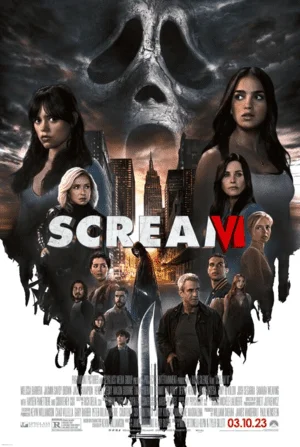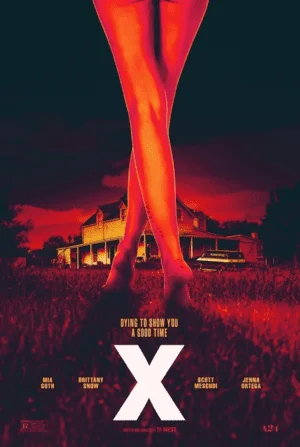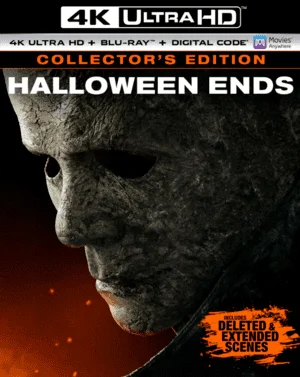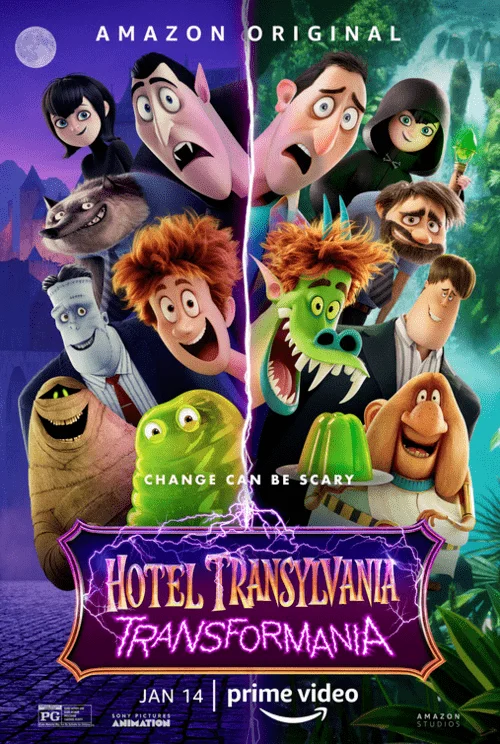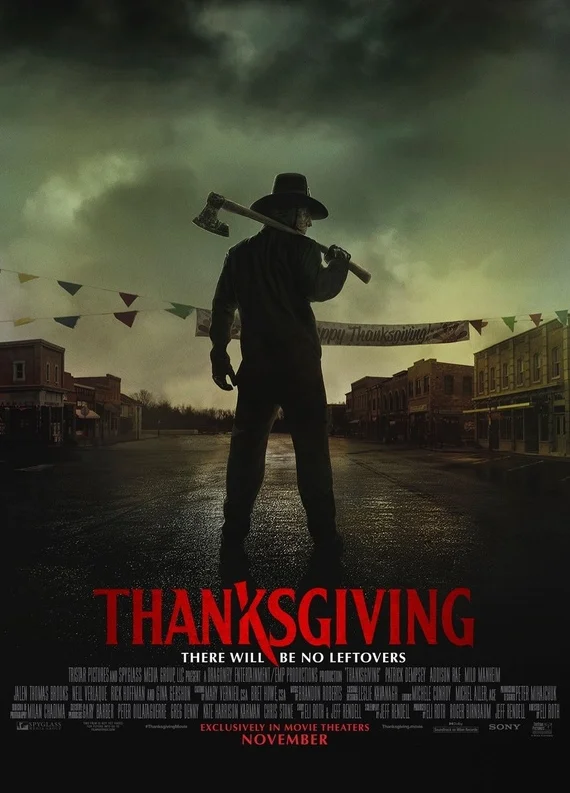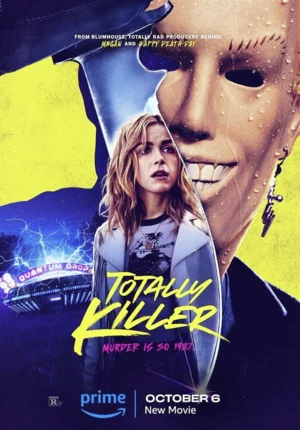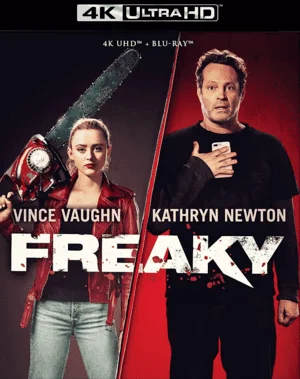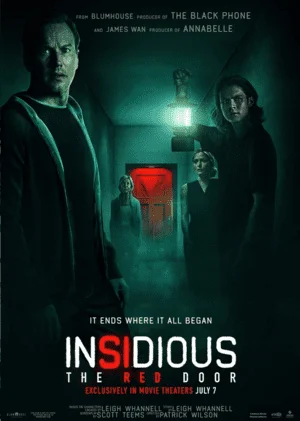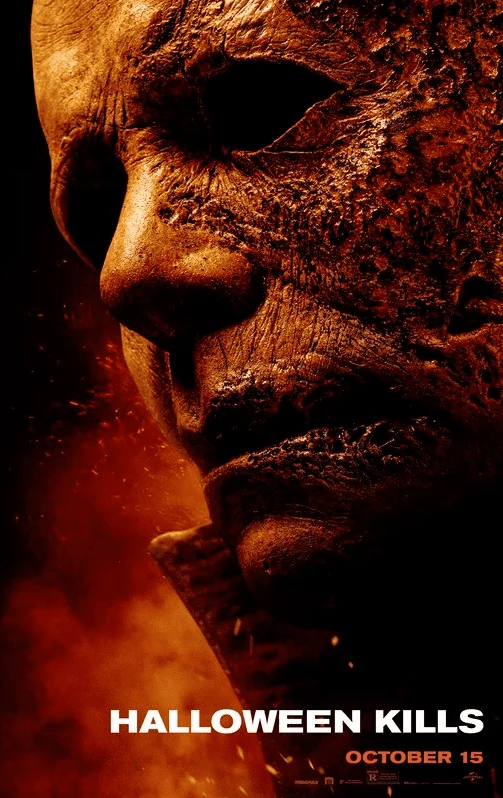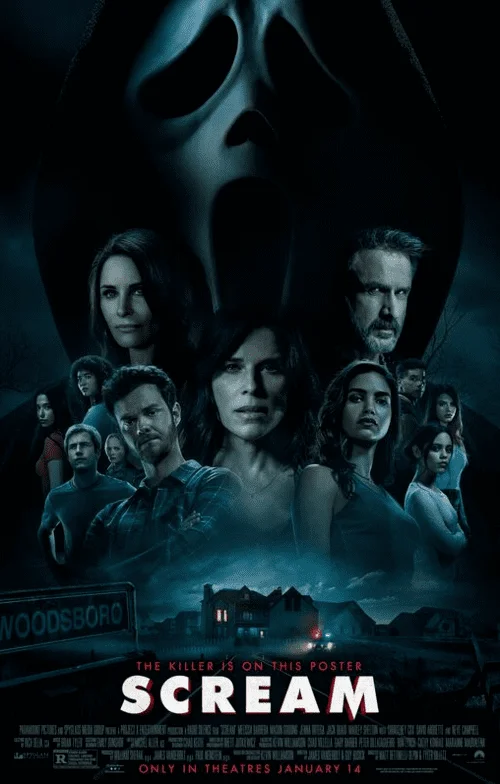
Scream 4K 2022 2160p WEB-DL
Cast: Neve Campbell, Courteney Cox, David Arquette, Melissa Barrera, Jack Quaid, Mikey Madison, Jenna Ortega, Dylan Minnette, Jasmin Savoy Brown, Mason Gooding, Sonia Ammar, Marley Shelton, Skeet Ulrich, Kyle Gallner, Chester Tam, Reggie Conquest, Heather Matarazzo, Brooke Barnhill.

The slogan of the tape: "It's always who you know."
The new part will return beloved characters Sidney (Neve Campbell), journalist Gail Weathers (Courtney Cox) and policeman Dewey Riley (David Arquette). Newcomers to the franchise include Jack Quaid, Dylan Minnetti, Jenna Ortega, Melissa Barrera and others.
In the plot, a masked killer nicknamed Ghostface returns and starts wielding his knife again. It is up to the heroes to find out who is hiding under the hood, and, of course, to survive.
Scream 4K Review
"What's your favorite horror movie?" - most of those born in the '80s and '90s will answer without blinking an eye: "Scream," including directors Tyler Gillette, Matthew Bettinelli and producer Chad Villella of Radio Silence fame. Together, they worked on the anthology "Monsters of the South" and the uproarious horror film "I'm Going to Search." The latter, through Adam Brody, twinned with the Ghost Masked Killer franchise: the artist played a cop in the fourth installment, and in this one (the fifth, but for some reason unnumbered) he was credited in the credits.
No doubt, the talented directors could not believe that they inherited a great brainchild, and said that only thanks to Wes Craven and became a filmmaker. Confessions of such power are always contagious: gradually one by one the Woodsboro veterans signed on. First former spouses David Arquette and Courtney Cox ("Scream" they owe to their marriage), and then Neve Campbell - the main last girl of the '90s. But the reunion cast wasn't limited to the iconic trio: sheriff's deputy Judy Hicks (Marley Shelton) from part four and Randy's sister Martha (Heather Matarazzo) from part three appeared on screen. If all those names mean nothing to you, the movie will also be rather difficult to take in: the return involves a long acquaintance.
Everyone gathers not for a joyous occasion like Dew and Gail's wedding anniversary or Sydney's birthday (survival). The masked maniac has reappeared and is terrorizing the youth of Woodsboro all over again: sister, brothers, grandnephews, children, devs or other relatives of the original movie characters sweep through the gallery of faces in front of the viewer. Trying to remember them all is not particularly worthwhile; perhaps only Sam Carpenter (Melissa Barrera), who claims to be the latest Girl 5.0, stands out scripturally. Each of the recruits will become a suspect, and so there is no point in getting attached to the characters: most likely, they will either be killed or killed themselves.
"Scream" became a symbol of postmodern flirtations and thunderous meth in slashers, though it was neither the first nor the last in this field. Far more influenced by genre fluidity: the scary and the funny were seen as the emotional underpinnings of a bloody detective with not one, but many murders and killers, built on a whodunit scheme (Justine Savoy Brown's character spells out the formula on screen). That's why the screenwriter of previous films, Kevin Williamson (here, he acted as one of the many producers) and director Wes Craven diligently led the audience astray, but still left clues: literal details in the frame or screaming montage stitches that gave a chance to guess who the masked killer was before the climactic scene.
"Scream" of 2022 is like an adaptation of Jonathan Lynn's Cluedo board game. In "Cluedo" (the classic closed-circuit detective) several endings were shown, equally possible, and the narrative was structured so that several people could have been the killer independently of each other. So here, too, that very third act (the longest scene in the original) can be "cut off" and any other denouement can be screwed on the editing table. The actors themselves during filming sometimes did not know which version of the script would be the final one, and did not really understand who they were playing. And the answer to the main question of the whole series comes not from the inner logic of the plot, but from Quentin Tarantino's filmography. That's why there's no triumphant curtain-opening in the finale: everyone has a chance to be a ghost face, except the deceased (although the dead have already risen in Scream 3 - and that's a spoiler with 20 years of exposure).
Following the tried-and-true pattern, all the newcomers to the battlefield and, above all, the central last girl (the miscast is to blame here) become purely functional characters: a new Randy, another suspicious boyfriend, a strange best friend, the sister of the main victim, etc., etc. The characters were archetypal in the original, too, but there was still a genuine vitality to them, albeit one built on genre characterization. Besides, Scream, like most of Wes Craven's films, was a woman's affair: time after time, Sidney Prescott fought not only another maniac, but also any aggressive manifestations of the patriarchal world and the consequences of her own trauma (even before it became mainstream). And she wasn't alone in the battle: side by side was Gail Weathers' best enemy and nemesis.
Gillette and Bettinelli chose humanism over cinephilia and love over blind adoration. For two hours you cannot forget for a second that you are in a theater, surrounded by fans and sympathizers, and that the screen is a pop-cultural product or, more frankly, a fanfic. Gillette and Bettinelli's film is a coolly invented concept, a real exercise in greatness that looks better in text than on screen. There's a lot of good humor, some really brutal and frightening scenes of carnage, some funny meta-collisions, but all in all Scream 5 is the same as Star Wars: The Force Awakens. George Lucas admirer J.J. Abrams has inserted himself into the beloved world, leaving room for the maestro to bow, veterans to come out, endless references and corrections to modernity (time goes on, mores change).
However, Radio Silence, despite sometimes excessive reverence for the material (and tribute to Craven bordering on vulgarity), still perfectly captures zeitgeist and fanaticism as the main driving force behind everything that happens. Gale Weathers, in the finale of the original trilogy, says that "pop culture is nineteenth-century politics. Over the past 20 years it has become both religion, family values, and the moral compass of several generations at once. And so the payoff is smooth: of course fans want a return to the beloved fiefdom of death; of course fans will be unhappy about the attempt on Woodsboro's holy altar. It was already in "Scream," Sidney may die, the killer is someone you know, never say, "I'll be right back," case closed, slashers dead, long live slashers!
File size: 12.1 GB
Trailer Scream 4K 2022 2160p WEB-DL
Latest added movies
Comments on the movie
Add a comment
 like
like do not like
do not like